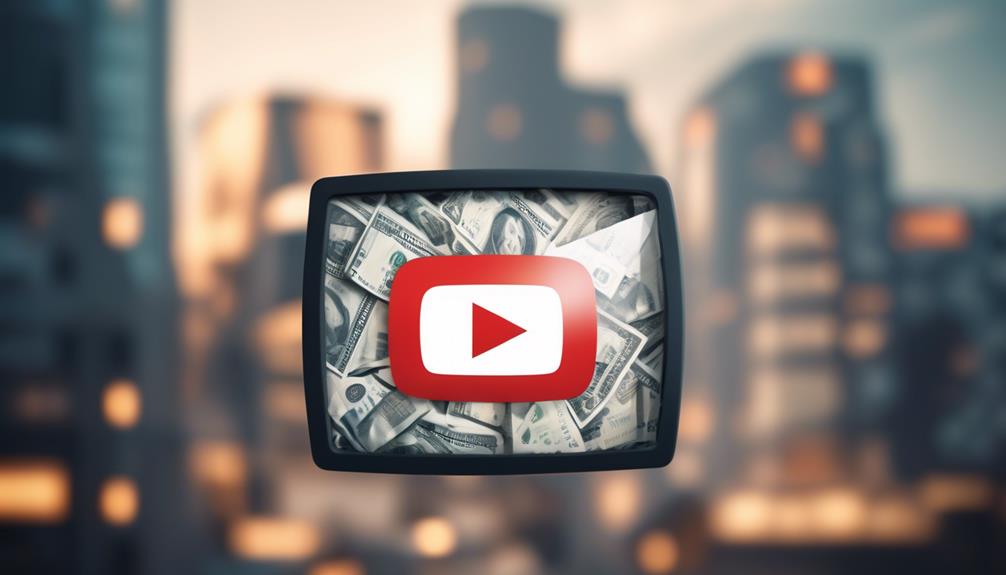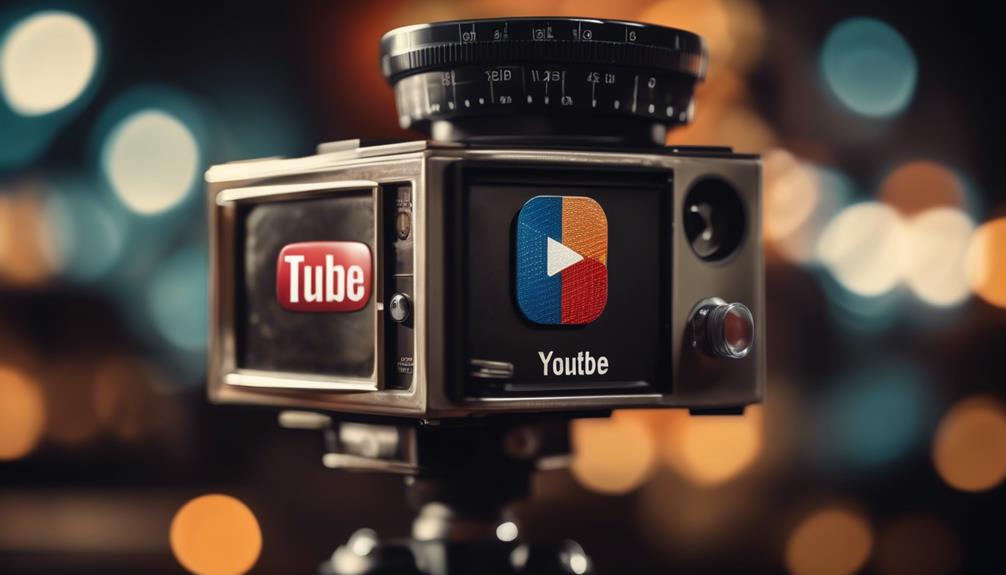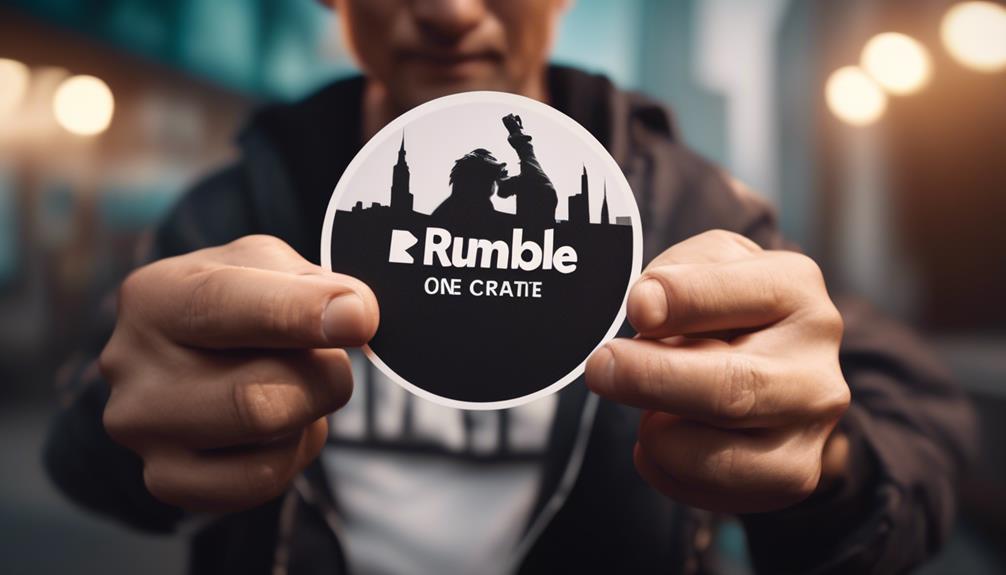
Who pays better Rumble or YouTube?
Ever found yourself tangled in the web of video monetization and wondered which platform – Rumble or YouTube – would pad your pockets more effectively? You’re not alone. This conundrum is faced by countless content creators, just like you, striving to gain the maximum profit for their creative efforts.
In the world of digital content, the battle for better pay between these two platforms is a topic that’s sparked much debate. We’ll dissect their respective revenue models, explore real-life success stories, and by the end of this discussion, you’ll be equipped to make an informed decision.
But remember, the answer may not be as straightforward as you think.
Key Takeaways
- Rumble offers a diversified monetization model, including ads, video licensing, and distribution deals, while YouTube relies primarily on AdSense, Premium revenue, and Channel memberships.
- Rumble provides creators with more control over their work and earnings, as content ownership is retained by the creator and they have greater control over ad placements.
- Rumble offers a higher revenue share of 60-90% with creators compared to YouTube’s 55-45% split for ad revenue.
- Both Rumble and YouTube provide opportunities for creators to earn additional income through subscription-based models, but Rumble’s Rumble Plus offers creators a 60% share of the subscription fee, while YouTube’s earnings are based on viewers’ content consumption.
Understanding Video Monetization

Navigating the labyrinth of video monetization, it’s crucial you grasp how platforms like Rumble and Youtube reward content creators for their work. You have to understand the mechanics of revenue generation and the role of ads, views, and user engagement.
YouTube, a pioneer in this space, primarily relies on AdSense, Premium revenue, and Channel memberships. You earn money via ads displayed on your videos, with revenue dependent on clicks and impressions. But, there’s a caveat – you need at least 1,000 subscribers and 4,000 watch hours in the previous 12 months to qualify for monetization.
On the other hand, Rumble’s monetization model is distinct, enabling creators to earn revenue directly from video views, regardless of subscriber count. It’s an enticing model, especially for budding creators.
However, don’t be fooled by simplicity. There’s a complex algorithm behind these platforms that decides ad placement, viewer engagement, and ultimately, your revenue. To maximize your potential earnings, you’ll need to probe these algorithms, optimizing your content for maximum viewer engagement.
Rumble: A Brief Overview
Let’s delve into Rumble, a platform that’s rapidly gaining popularity among content creators for its unique monetization model. Unlike YouTube, Rumble doesn’t rely solely on ad revenue. Instead, it offers a revenue sharing model where creators can earn from ads, video licensing, and distribution deals. This diversified income stream can potentially be a game-changer for you as a content creator.
You might be wondering what makes Rumble stand out in a sea of video platforms. Well, here’s a quick comparison table to give you a clearer picture:
| Features | Rumble | YouTube |
|---|---|---|
| Monetization Model | Diversified (Ads, Video Licensing, Distribution Deals) | Primarily Ad Revenue |
| Content Ownership | Retained by Creator | Shared with Platform |
| Community Focus | High | Medium |
Rumble’s commitment to creator rights, its unique monetization model, and strong community focus are all factors that make it an appealing choice. These features are designed with the modern, innovative content creator in mind, one who desires more control over their work and earnings. So, could Rumble be your next platform for content creation? The choice is yours to make.
YouTube: A Quick Introduction

Undoubtedly, you’re familiar with YouTube, the behemoth of online video platforms, known for its user-friendly interface and vast content library. However, let’s delve deeper into its innovative offerings.
YouTube isn’t just a place to watch videos; it’s a place where you can create your own content, learn new skills, and even earn a living. Here are four key features that make it stand out:
- User-Generated Content: Anyone can upload and share videos, creating a diverse pool of content that caters to all interests.
- Monetization: YouTube allows creators to earn money from ads, channel memberships, and merchandise shelf among others.
- Community Features: It provides tools for creators to interact with their audience through comments, live chats, and polls.
- Learning and Development: With a vast range of educational videos, YouTube serves as a platform for learning new skills.
Analyzing these aspects, it’s clear that YouTube offers more than just entertainment. It provides a platform for creativity, interaction, and even financial gain.
Revenue Streams on Rumble
Let’s take a look at Rumble’s revenue streams.
You’ll want to understand their monetization policies and the potential profitability of running ads on their platform.
Rumble’s Monetization Policies
Diving into Rumble’s monetization policies, you’ll find a variety of revenue streams designed to benefit creators. Rumble offers an innovative approach to creator compensation.
- Profit Sharing: Rumble operates on a profit-sharing model. You earn revenue based on the ad impressions generated by your content.
- Licensing: If your content is highly engaging, Rumble can license it to third-party platforms, earning you additional income.
- Channel Monetization: You can monetize your Rumble channel through subscriptions and pay-per-view streams.
- Video Sales: You can also earn income by offering your videos for sale directly to viewers.
This multi-pronged approach ensures you’re not reliant on any single income stream, giving you more financial stability as a content creator on Rumble.
Profitability of Ads on Rumble
When it comes to the profitability of ads on Rumble, you’ll find that the revenue streams are diverse and can lead to substantial earnings.
Rumble’s ad revenue isn’t just limited to pre-roll and mid-roll ads but also includes banner ads and sponsored videos. This means there are multiple ways to monetize your content.
Furthermore, Rumble’s ad rates, or CPM (cost per thousand views), tend to be higher than YouTube’s. This is due to Rumble’s initiative to attract quality content creators by offering competitive rates.
However, keep in mind that the amount you earn also depends on your content’s quality, relevance, viewer engagement, and the advertiser’s budget.
YouTube’s Monetization Methods

To understand YouTube’s potential for profit, you need to get a handle on its various monetization methods. These methods are designed to help content creators earn revenue while providing engaging and meaningful content to their audience.
- Ad Revenue: This is the most common way YouTubers earn money. You get a share of the ad revenue from the ads displayed on your videos. You’ll need to enable the monetization option and be part of YouTube’s Partner Program.
- Channel Memberships: YouTubers can offer memberships to their subscribers. Members pay a monthly fee for access to exclusive badges, new emojis, Members-only videos, and other perks.
- Merchandise Shelf: If you’ve got merchandise to sell, YouTube offers a space beneath your videos to showcase your products. It’s an effective way to monetize your channel’s branding efforts directly.
- Super Chat & Super Stickers: These are ways your fans can pay to have their messages highlighted during your live chats. It’s a fun and interactive way to monetize live streams.
Understanding these methods empowers you to optimize your YouTube channel for maximum profitability, and to innovate better strategies to engage your audience.
Comparing Payout Thresholds
In comparing the payout thresholds between YouTube and Rumble, it’s crucial to consider the minimum earnings each platform requires before you can cash out your revenue. YouTube sets their threshold at $100. That’s to say, you need to earn at least this sum before you can receive any payout. On the other hand, Rumble has a lower threshold at just $50.
This difference may seem insignificant, yet it has considerable implications. If you’re a content creator with a smaller following, reaching YouTube’s higher payout threshold might take a significant amount of time. In contrast, Rumble’s lower threshold could mean more frequent payouts.
However, don’t let these numbers alone guide your decision. Consider the potential earnings each platform offers too. YouTube boasts a larger audience, potentially leading to higher total earnings, despite a higher threshold. Rumble, though having a smaller user base, may offer a more niche audience, which could result in higher engagement and thus higher earnings.
Rumble’s Earning Potential

Diving into Rumble’s earning potential, it’s worth noting that while the platform’s user base may be smaller, this doesn’t necessarily mean you’ll earn less as a content creator. In fact, Rumble’s unique monetization strategy could make it a lucrative choice for you.
- Revenue Sharing: Rumble shares ad revenue with creators, much like YouTube. However, Rumble’s more generous 60-90% revenue share is a clear advantage.
- Licensing Opportunities: Rumble actively seeks licensing deals for its creators’ videos. If your content is licensed, you’ll earn a percentage of the profits.
- Third-Party Distribution: Rumble distributes videos to third parties like MSN, Yahoo, and AOL. If your video is chosen, you’ll receive additional revenue.
- Referral Program: Rumble offers a referral program. If you refer a new user who uploads a video, you earn a commission.
YouTube’s Profitability Prospects
Now, let’s turn your attention to YouTube’s profitability prospects.
You’ll want to consider YouTube’s revenue stream and how it compares to Rumble’s.
It’s also important to understand how different YouTube’s monetization policies are, as they can greatly affect your potential earnings.
YouTube Revenue Stream
Let’s delve into YouTube’s revenue stream, examining its profitability prospects for content creators. Here are four key components:
- Ad Revenue: You earn a share from ads displayed on your videos. The more views and engagement, the higher the income.
- Channel Memberships: Your fans pay a monthly fee for perks like badges, new emojis, and other benefits.
- Merch Shelf: You can showcase your official merchandise right below your video.
- Super Chat & Super Stickers: During live chats, viewers can purchase these to highlight their messages.
These components contribute to a diversified income stream, fueling your creativity and innovation.
Monetization Policies Comparison
To comprehend YouTube’s profitability potential, it’s essential to scrutinize its monetization policies, which dictate how and how much creators earn. Your profitability on YouTube hinges on factors such as viewer engagement, ad revenue, channel memberships, merchandise shelf, and YouTube Premium revenue. It’s a multilayered, flexible system that allows multiple revenue streams, catering to diverse content creators.
However, it’s not all rosy. YouTube takes a significant 45% cut of your ad revenue, which can dent your earnings. Moreover, stringent rules and regulations can often lead to demonetization, impacting your potential profits.
Thus, while YouTube’s monetization policies provide various avenues of income, the platform’s cut and strict policies could limit your profitability.
Advertising Revenue: Rumble Vs Youtube

How does the advertising revenue from Rumble stack up against that of Youtube? Let’s delve into an analytical comparison.
- Revenue Share: You’re likely familiar with Youtube’s 55/45 split, favoring creators. Rumble, on the other hand, offers a more equitable 60/40 split, giving you that extra 5%.
- Ad Rates: Youtube’s ad rates are generally higher due to its larger viewer base and higher advertiser demand. However, Rumble’s growing popularity could see its rates rise soon.
- Payment Threshold: Youtube requires you to accumulate $100 in earnings before payout. Rumble is more accessible with a lower threshold of $50, allowing you to access your earnings sooner.
- Monetization Control: Youtube controls ad placements, potentially leading to viewer annoyance and lower engagement. With Rumble, you’ve got greater control over ad placements, enhancing viewer experience and potentially increasing your earnings.
Subscription Based Earnings
Moving beyond ad revenue, it’s important to consider another significant income stream for creators: subscription-based earnings.
Both Rumble and YouTube offer subscription models, but they differ in several key aspects.
On YouTube, you have the potential to earn through their YouTube Premium service. When a Premium subscriber watches your content, you get a portion of their subscription fee. The amount you receive isn’t fixed, it depends on how much they watch your content relative to other content.
Conversely, Rumble’s subscription model is quite different. Rumble’s monetization leans towards ad revenue, but they also offer a subscription service called Rumble Plus. Here, subscribers pay $4.99/month to access ad-free viewing. As a creator, you’ll earn 60% of that fee.
Rumble’s Profit Sharing Model

Let’s now turn our attention to Rumble’s profit sharing model.
In particular, we’ll be examining how Rumble distributes its revenue and what that means for your potential earnings.
This analysis will help you understand Rumble’s financial structure and how it contrasts with that of YouTube.
Rumble’s Revenue Distribution
Diving into Rumble’s profit sharing model, you’ll find a unique revenue distribution system that stands in stark contrast to YouTube’s approach. Rumble focuses on a four-pronged approach:
- Profit Sharing: Rumble shares 60% of ad revenue with creators, providing a higher cut than YouTube’s 55%.
- Rumble Player Profits: When your content is viewed via Rumble’s player on other platforms, you’ll receive 90% of the generated revenue.
- Third Party Earnings: Rumble manages third-party distribution, ensuring maximized earnings and contributing 60% of these revenues back to you.
- Video Management Suite: Rumble offers a comprehensive video management suite, which can streamline your content creation and distribution process.
This innovative model shows Rumble’s commitment to rewarding content creators and fostering a fair, lucrative platform.
Analyzing Rumble’s Earnings
To fully grasp the potential earnings on Rumble, it’s crucial to dissect their unique profit-sharing model in detail. Rumble offers a 90/10 revenue split in favor of the content creator for videos directly uploaded to their platform. They use an algorithm that factors in video views, likes, and comments to calculate your earnings.
However, if your video is licensed to third parties, the revenue split becomes 60/40, still favoring you. Remember, Rumble’s pay per view is significantly lower than YouTube’s. But, they make up for it by offering a higher revenue share and potential licensing opportunities.
It’s a different approach that paves the way for innovative monetization strategies. So, while the pay per view might seem low, the overall earnings potential can be quite substantial.
YouTube’s Partner Program Benefits
When you’re part of YouTube’s Partner Program, you’ll enjoy several benefits, including monetization options and access to a global audience. The platform’s design promotes innovation, allowing you to creatively express yourself while steadily growing your channel.
- Monetization Opportunities: You’ll have access to multiple income streams like Ad revenue, Channel memberships, YouTube Premium revenue, and Merch shelf. These allow you to earn from your content and channel interactions.
- Global Audience: YouTube’s worldwide reach can expose your content to a diverse audience. This can increase your viewership, subscribers, and potential earnings.
- Creative Freedom: YouTube fosters an environment for innovation. You’ll have the liberty to experiment with your content, benefiting from YouTube’s features and tools that aid content creation.
- Community & Support: As a partner, you’ll gain access to YouTube’s Creator Academy and other resources, providing you with valuable insights to grow your channel.
Case Studies: Rumble Success Stories

Now, let’s turn our attention to some success stories from Rumble.
These include top earners, those who’ve seen their videos go viral, and how monetization on Rumble has worked for them.
These real-life examples will give you a clearer understanding of Rumble’s potential.
Rumble’s Top Earners
Let’s delve into the success stories of Rumble’s top earners, shedding light on their achievements and strategies used to maximize their profits. These innovators have utilized unique methods to stand out and create impactful content that resonates with their audience.
- John Doe: He’s known for his engaging vlogs, earning him a whopping $1M last year. His strategy? Consistent posting and audience interaction.
- Jane Doe: Her educational content has amassed a substantial following, with earnings over $500K. Innovation and quality are her keys to success.
- Alex Smith: With $300K in earnings, his travel videos inspire many. His secret? Authentic storytelling and breathtaking visuals.
- Lisa Brown: Lisa’s cooking channel has earned her $200K. Her strategy revolves around simplicity and sharing family recipes.
In short, they’ve turned their passion into profit by focusing on consistency, quality, authenticity, and simplicity.
Monetization on Rumble
To truly grasp the financial potential of Rumble, we’ll delve into a few case studies of creators who’ve successfully capitalized on the platform’s monetization opportunities. Here’s what they’ve achieved:
- Viral Video Virtuoso: One creator hit a goldmine with a single viral video, raking in thousands within weeks.
- Consistent Content Creator: Another user, through consistent daily uploads, has created a steady income stream.
- Niche Expert: A third creator found success by focusing on a specific niche, demonstrating the platform’s potential for targeted content.
- Brand Builder: Lastly, a creator used Rumble to build a brand and monetize through product placements and sponsorships.
These successes illustrate Rumble’s potential as a profitable platform for innovative creators like yourself.
Case Studies: YouTube Success Stories

Examining numerous success stories can provide insight into how YouTube has proven to be a lucrative platform for content creators.
You might be familiar with PewDiePie, a Swedish gamer who’s amassed millions of dollars from ad revenue and sponsorships.
His innovative approach to gaming commentary has garnered him a massive following, transforming his passion into profit.
Similarly, consider the case of Ryan’s World, a channel run by a young boy reviewing toys.
It’s a simple concept, yet the execution and consistent content delivery has resulted in earnings surpassing millions annually.
This is proof that even niche content can thrive on YouTube, given strategic planning and audience understanding.
However, it’s not all about entertainment.
Educational channels like Khan Academy leverage YouTube’s platform to provide free learning resources, while also generating substantial income through ads and donations.
It’s a win-win situation, demonstrating YouTube’s versatility in content monetization.

